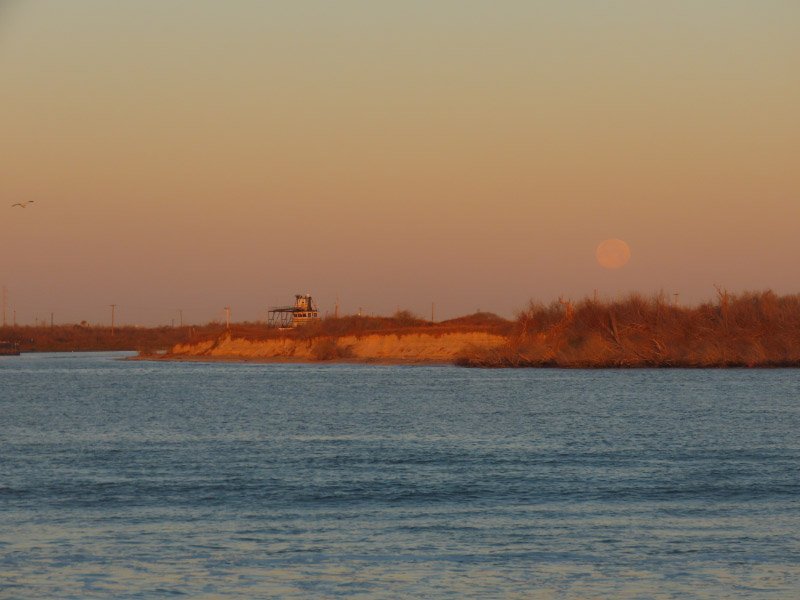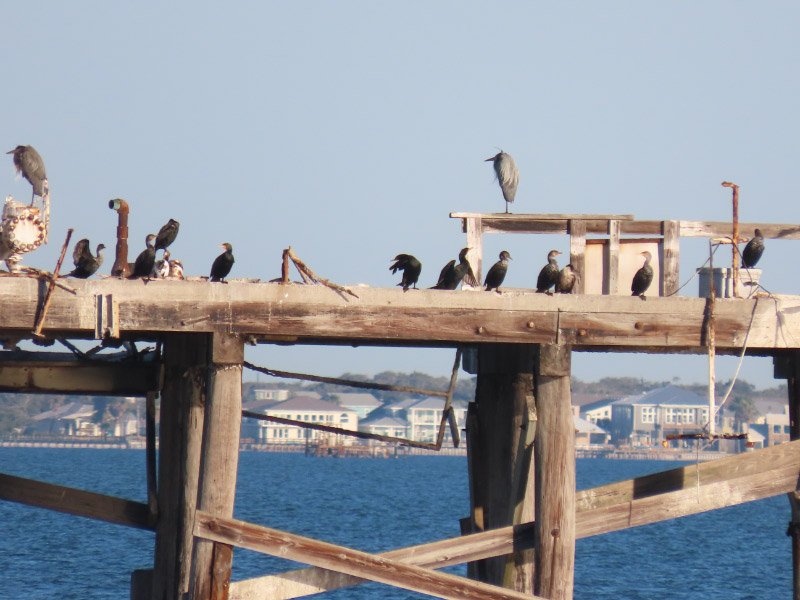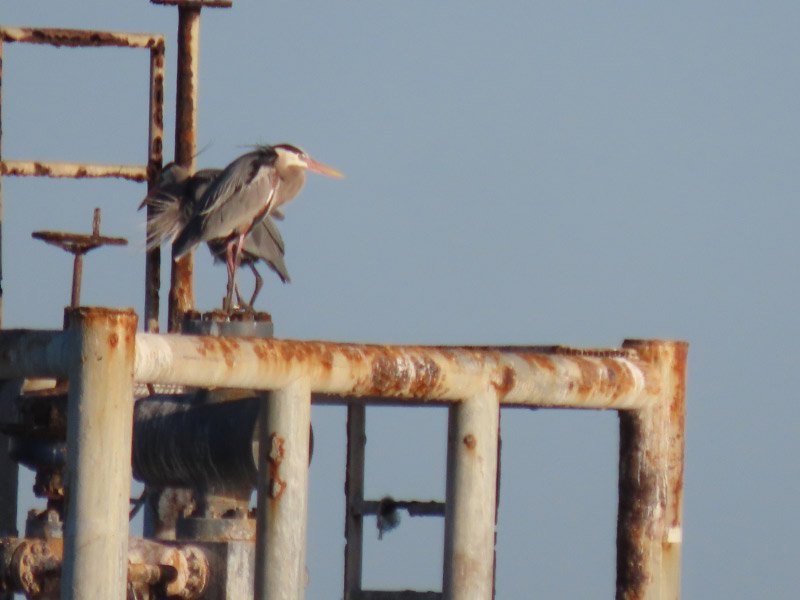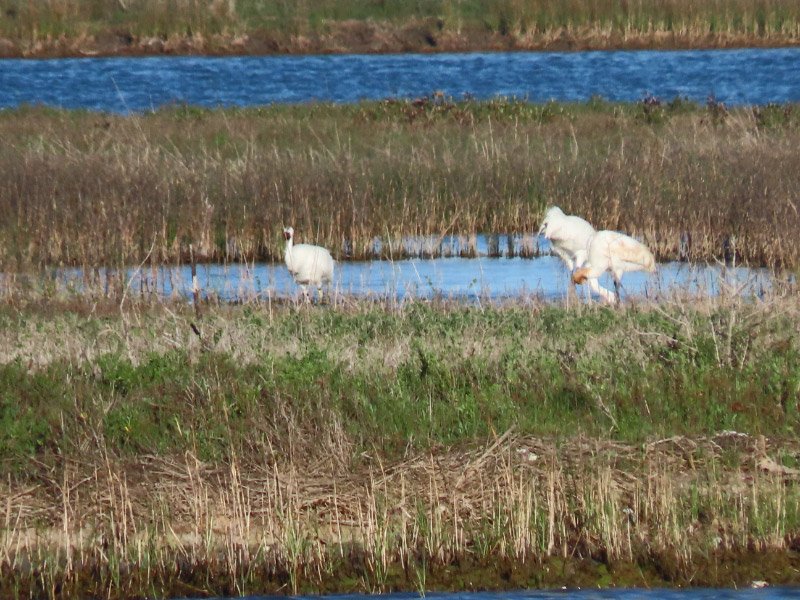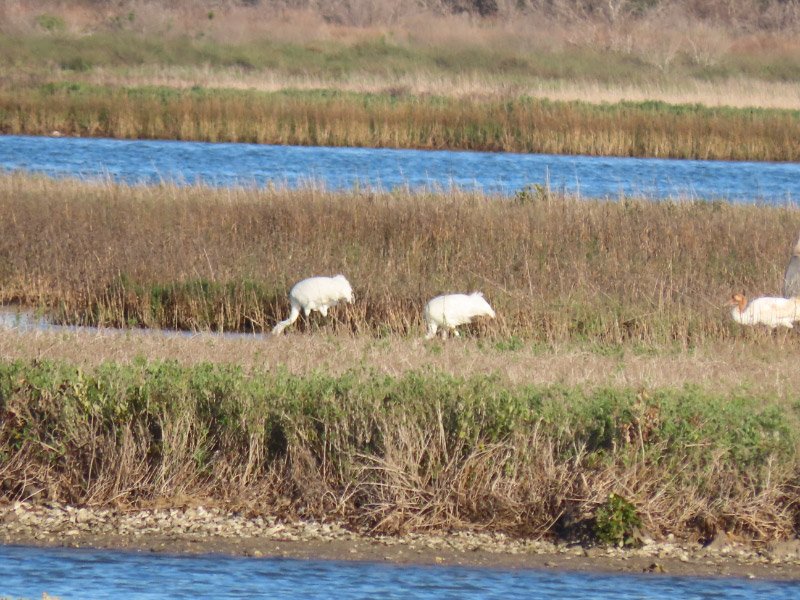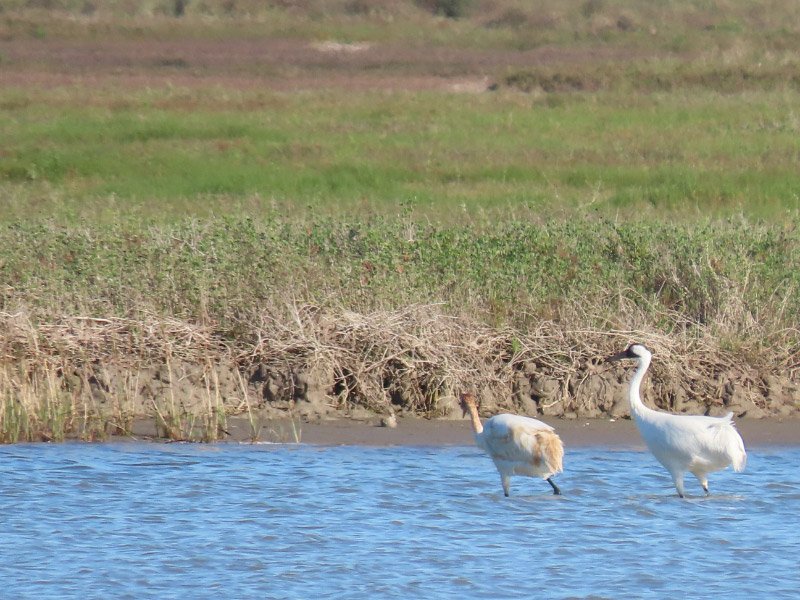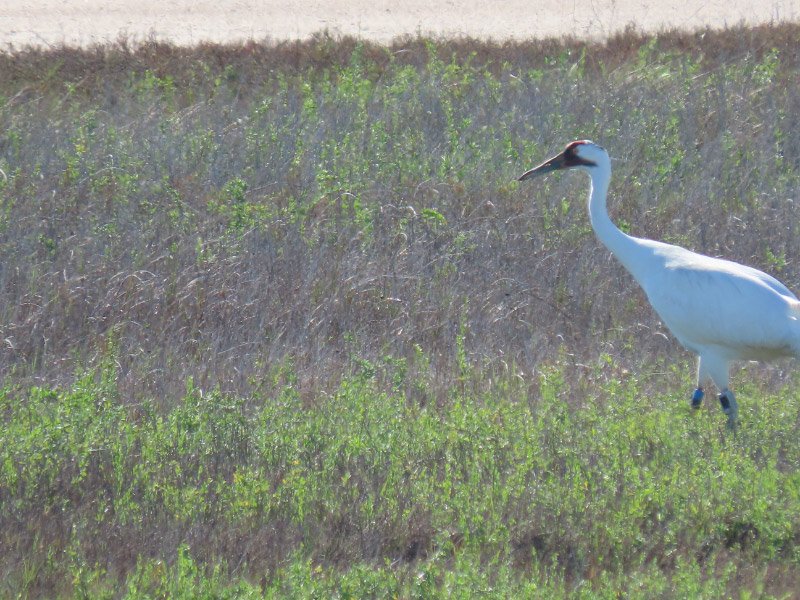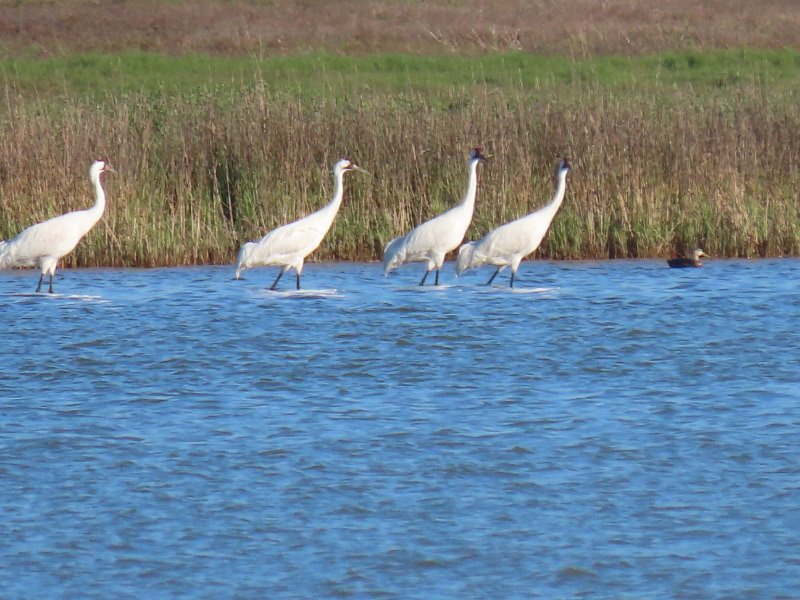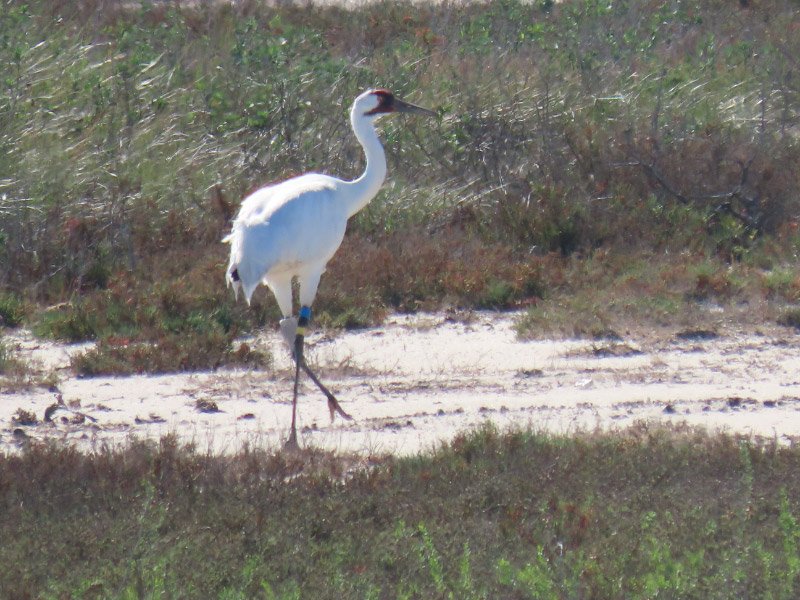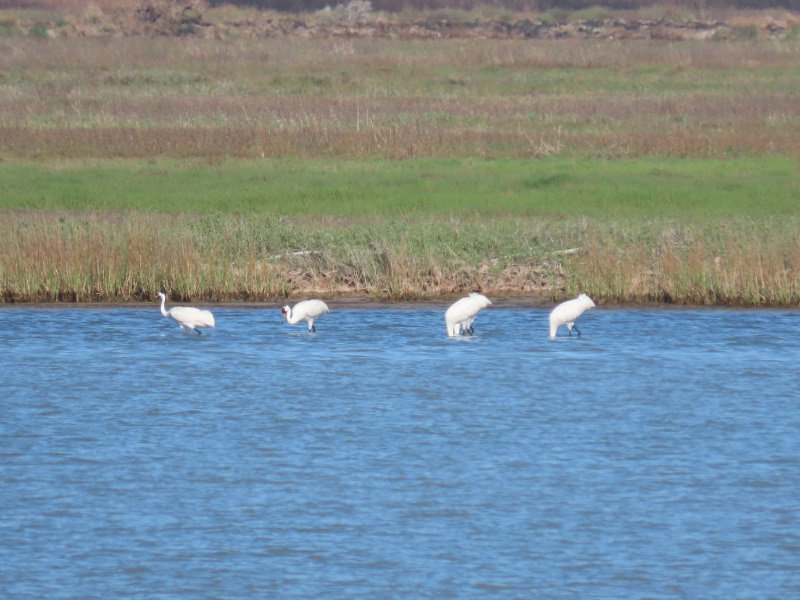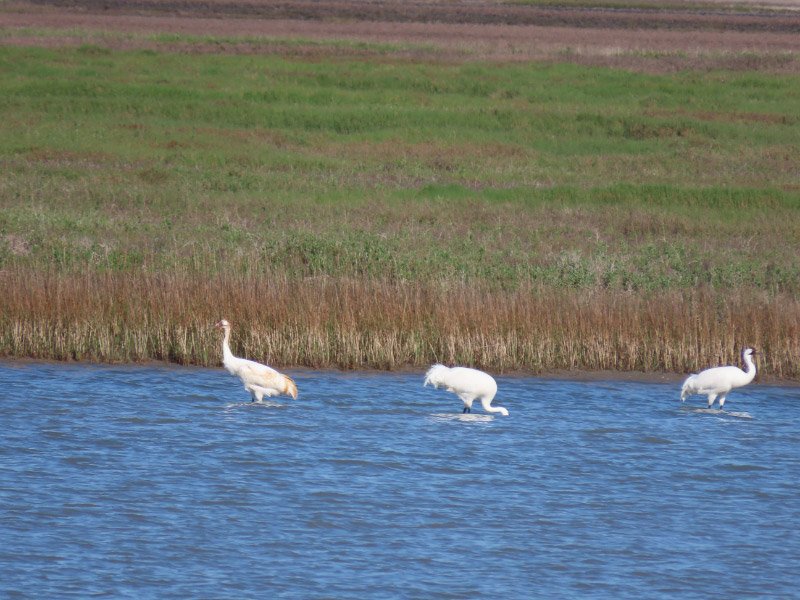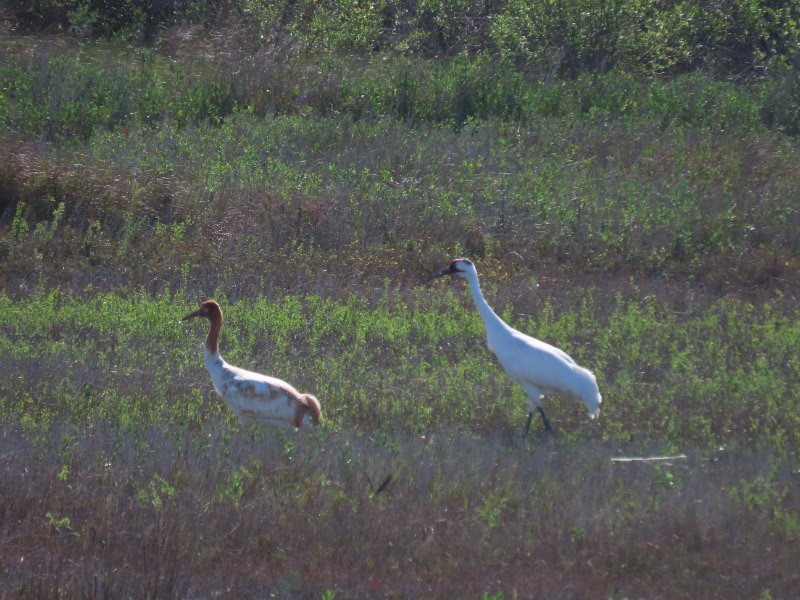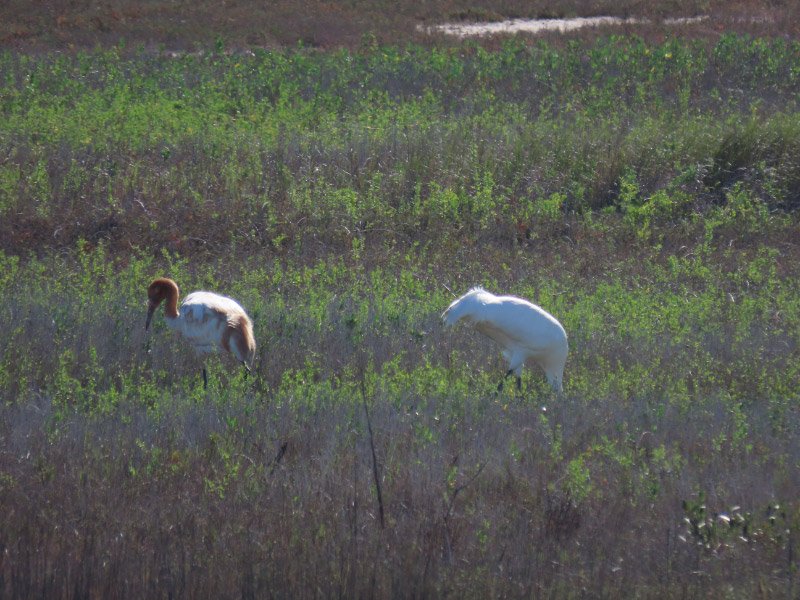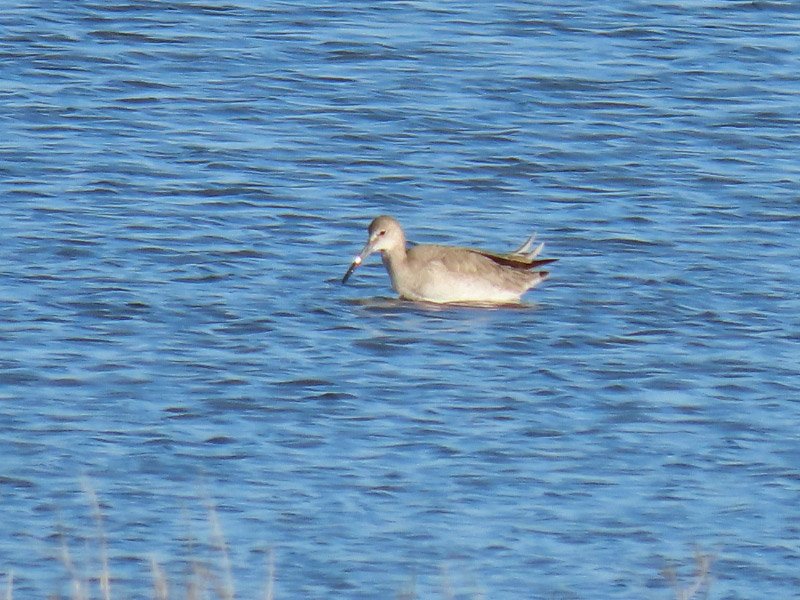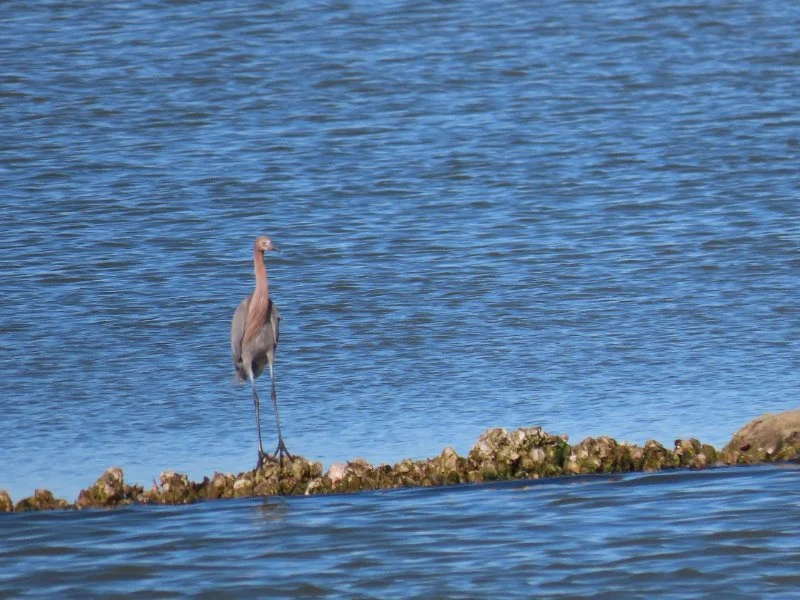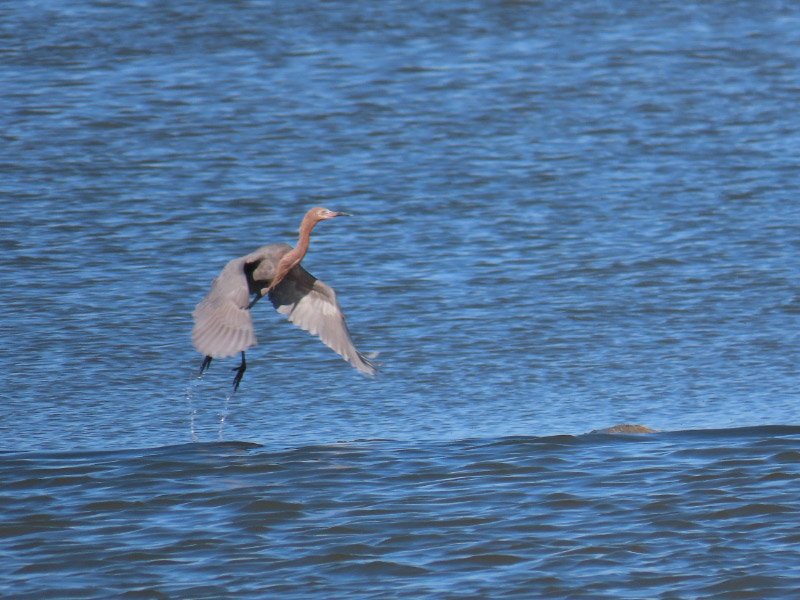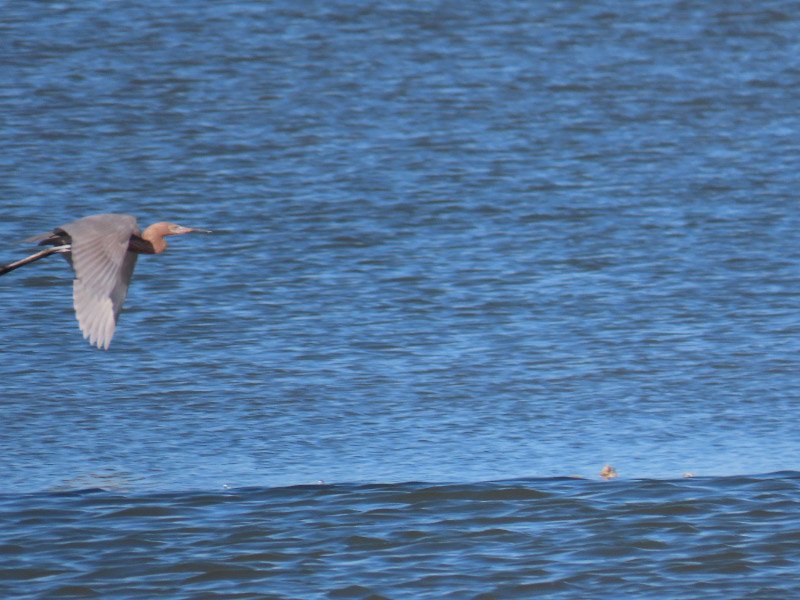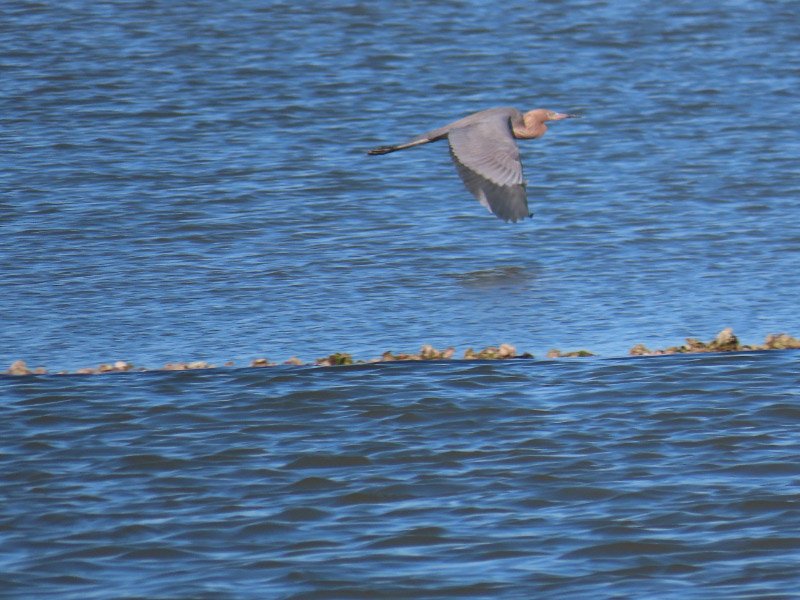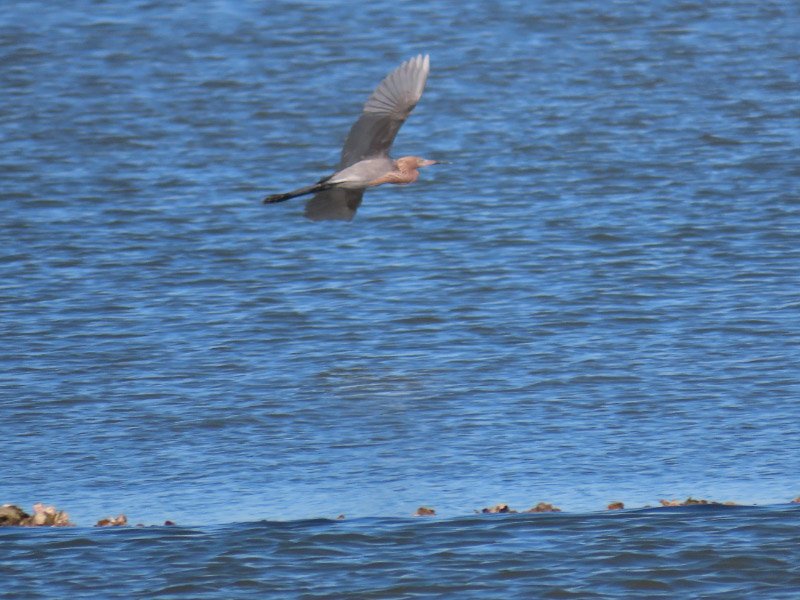Whooping Crane Boat Tour
/We were at the dock for the 7 AM departure of our boat on the third day of the Whooping Crane Festival.
I took a few pictures before we boarded – the moon over the harbor area.
Our destination was the Aransas National Wildlife Refuge where Whooping Cranes feed in the marshy/shallow areas…only visible via boat and it took over an hour to get there from Port Aransas. We passed familiar areas early on and saw a group of American white pelicans, morning light with moon setting over the shore, roseate spoonbills and white ibis in the distance, and the Aransas Pass Lydia Ann Lighthouse.
Then we entered an area that was different than our previous tours and more open water…with occasional platforms with cormorants and great blue herons hunkered in the chilly morning wind. There was a tall bridge as well.
Then there started to be a lot of small islands full of birds: Cormorants, great blue herons and brown pelicans. One area seemed to have a lot of great blue herons and I wondered if the island was their roost. There were also groups of laughing gulls. (Click on the small images to see a larger version.)
And then we started seeing Whooping Cranes. Even at a distance – they are easy to identify because they are so large…and so white. The young are rusty looking – particularly their heads. Many sightings were of 3 birds: 2 adult birds and a colt; it must have been a good year for increasing the whooping crane population!
There were other birds to see too between whooping crane sightings – roseate spoonbills, green-winged teals, willets, American avocets, more great blue herons, buffleheads, cormorants, an osprey, and reddish egret (that took off as a wave covered the spit of shells the bird was standing on).
I took some closeups of some shells…out of the water at low tide.
I also realized how wakes of boats impact the shoreline…why there are often blocks on the shore to reduce the erosion wakes can cause. It doesn’t take a big or fast-moving boat to cause damaging wakes in smaller channels.
And then we took a break as we headed back to Port Aransas – no more photos until the jetty with the usual brown pelicans.
We got back to the dock with plenty of time before our afternoon field trip for lunch; we then headed back to the Leonabelle Turnbull Birding Center.





